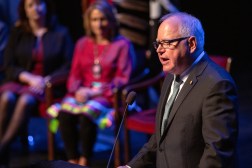Louisiana kicks off motor vehicle agency IT modernization with agile

Things can and often do go terribly wrong when a state government rebuilds an aging IT system, and so the State of Louisiana is taking a more cautious approach in its latest modernization project.
Project leaders from Louisiana Office of Technology Services (OTS) told StateScoop that work began in January on the first phase of a project to upgrade the systems used by the Office of Motor Vehicles (OMV) — some of them nearly 40 years old — and make them “TurboTax-simple.”
Rather than go through an extended procurement process and eventually award tens of millions of dollars to an outside vendor, the state is planning to conduct most of the work using internal staff and use an agile methodology to closely track the project’s progress as it advances in increments.
“We’re trying to get some small wins under our belt before we tackle the bigger systems,” said James Alt, an enterprise application architect who has been with the state for less than a year.
Alt explained that while the old systems still work, they are also limiting.
“As changes come down from the legislature, it’s not always easy to move a big behemoth like that,” Alt said.
OMV’s systems are built on top of a Unisys COBOL mainframe. Making changes to adapt to new legislative requirements or offer agencies new functionality requires redesigning the mainframe’s schema or blueprint, then taking the computer apart and putting it back together again.
Brett Connison, assistant director for applications and data management for public safety, said changes requested by the legislature are either impossible to instate or would take so long and require so much work that they’re often not worth doing.
Louisiana’s OMV offers its residents the option to purchase either personalized license plates, which contain numbers and letters of the vehicle owner’s choosing, or specialty plates that contain a distinctive design or logo, but it doesn’t offer both on the same plate.
“At some point in time, the legislature asked us to have personalized specialty plates. That’s not something the mainframe can handle,” Connison said.
Going forward, the idea is to create a modern, intuitive platform that can send and receive information easily, and would eventually allow self-service by citizens. Today, it takes OMV an entire year to train someone to use just the vehicle registration portion of their system, Connison said, which is exacerbating the department’s workforce challenges.
That’s the vision, but the state hasn’t committed. OTS is starting on the path to what may become an expansive modernization project by taking two small bites.
First, Alt said, they will replace a sales tax table currently sitting “on an old Lotus Notes database” with something API-driven that will allow users to easily pull up the expected tax rate for a transaction. That project is expected to be completed within two months, he said.
Next, they’ll redesign the system for tracking miscellaneous receipts — billing for inspection stickers, things like that, Alt said. That project is expected to take about six months — OTS is still gathering requirements from OMV, which is a big part of why an agile approach is thought to be superior.
“We’ve seen plenty of times at the state where we’ve kicked off projects and the development team goes off and does their thing and not necessarily coming back with something that solves the problem,” Alt said. “So we want to make sure we’re working with OMV from day one and getting exactly what they need.”
OMV hasn’t yet released the cost of the project, Connison said, but it would be calculated based on the hourly rates of seven developers, two analysts, a project manager and a few ancillary part-time workers.
“Because you’re looking at a state employee’s hourly rate that’s being charged compared to what a contractor’s going to charge you hourly, it’s significant savings over that because of the fact it’s all done in-house,” Connison said.
While Louisiana has years to go before it can claim victory on its OMV modernization, taking a piecemeal approach could mean avoiding the kind of struggle being faced by officials in Minnesota, who are now attempting to fix a $96 million vehicle license and registration system. The state’s Department of Public Safety and Minnesota IT Services are asking the legislature for an additional $43 million to fix the system, which generated backlogs and exhibited widespread bugs almost immediately after launching last July.
While one of the most recent largescale state IT failures, Minnesota’s story is not uncommon. And with so much at stake, it raises the question of why more IT government enterprises don’t use an agile methodology to hedge bets on what are usually huge, expensive and risky projects.
“I’m still relatively new to the state and I still ask myself that same question,” Alt said.
“I’ve been here a little bit longer and I still ask myself that same question,” Connison said. “However, I have a seen a stance of some agencies willing to take that risk and pay the money to be able to point the finger down the road. That’s not exactly what they want to do — they don’t want to have to point the finger. They want it to be successful, but at the same time, if things go off the rails, it wasn’t totally their fault.”
But this discussion is all theoretical for Alt and Connison. They said they plan to bring in a few contractors who are experienced in agile to get their project going, and then take it from there. They want to keep the experience gained during this upgrade in-house.
“You always worry when you’re taking on a project of this size,” Alt said. “But at the same time, I do feel emboldened [by our approach]. … It’s going to be great.”






